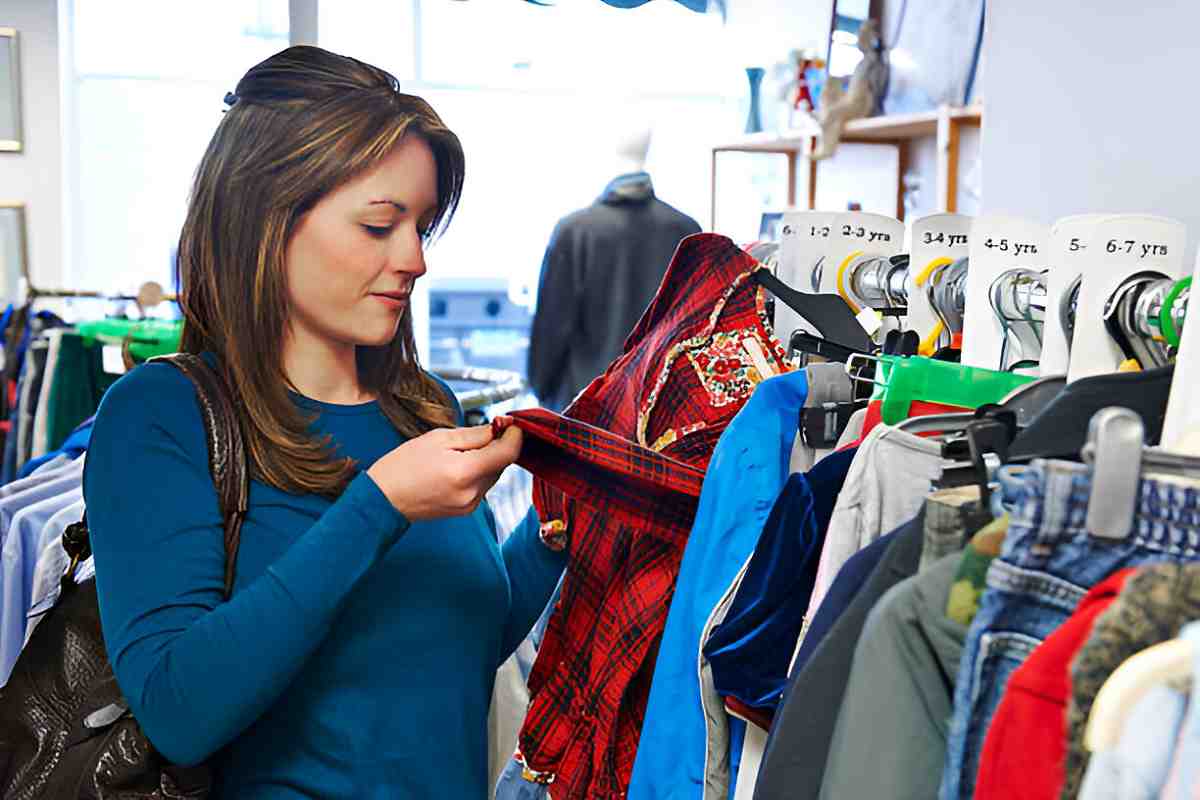In an age where sustainability is becoming increasingly vital, the trend of buying used clothes has gained significant momentum. This practice not only benefits the individual consumer through savings and unique clothing options but also positively impacts the environment and the fashion industry. Let’s delve deeper into why buying used clothing is a wise choice.
The Environmental Benefits of Buying Used Clothes
One of the most compelling reasons to consider buying used clothes is the positive environmental impact. The fashion industry is one of the largest polluters in the world, contributing to significant water usage, carbon emissions, and textile waste.
By purchasing second-hand garments, you are effectively extending the life cycle of clothing that might otherwise end up in landfills. This practice conserves resources and reduces the demand for new clothing production, which often involves harmful manufacturing processes.
Moreover, buying used clothes helps combat the ‘fast fashion’ cycle, where trends come and go at a rapid pace, leading to excessive consumption and waste. Each second-hand piece you buy is a step towards a more sustainable lifestyle.
Additionally, the production of new clothing requires vast amounts of water—approximately 2,700 liters for a single cotton t-shirt. This staggering figure highlights the importance of reusing existing garments, as it directly translates to water conservation. By choosing pre-owned items, consumers can significantly reduce the water footprint associated with their wardrobe, contributing to a more sustainable future.
Furthermore, the environmental benefits extend beyond just water conservation. The textile industry is notorious for its carbon emissions, with estimates suggesting that it accounts for around 10% of global greenhouse gas emissions. When you opt for used clothing, you are not only minimizing the carbon footprint associated with the production of new garments but also promoting a circular economy where resources are reused rather than discarded. This shift in consumer behavior can lead to a more responsible fashion ecosystem that prioritizes sustainability over fleeting trends.
How to Find Quality Used Clothing
Finding high-quality used clothing can sometimes feel challenging, but with the right approach, it becomes much easier. Start by exploring local thrift stores, consignment shops, and estate sales. These places often have hidden gems waiting to be discovered. Many thrift stores rotate their inventory regularly, so visiting frequently can yield new finds. Additionally, some shops have special sale days or discounts for students or seniors, making it even more affordable to revamp your wardrobe.
Additionally, do not underestimate the power of online resources. Websites and apps dedicated to second-hand shopping can provide extensive options, complete with detailed descriptions and images. Look for reputable platforms that allow users to rate their purchase experiences, ensuring a level of trust in the quality of clothing. Social media marketplaces have also become popular, where local sellers list items for quick sales. Engaging with local buy/sell/trade groups on platforms like Facebook can lead to unique finds and even the opportunity to negotiate prices.
Always inspect garments for any damages or wear. Familiarize yourself with fabric types and construction to distinguish between quality items and those that may not stand the test of time. Learning about different brands and their reputation for quality can also inform your choices. For instance, familiar brands often have a history of durability and style, making them a safer bet when shopping second-hand. Don’t hesitate to ask the seller questions about the item’s history or any repairs it may have undergone, as this can provide valuable insight into its longevity.
Another useful tip is to keep an open mind about alterations. Sometimes, a piece may not fit perfectly but has the potential to be tailored to your specifications. Knowing basic sewing skills or having a reliable tailor can turn a good find into a great one. Moreover, consider the versatility of the clothing item; a simple dress can be dressed up or down with the right accessories, making it a worthwhile addition to your wardrobe. By approaching used clothing shopping with creativity and a keen eye, you can curate a collection that is not only stylish but also reflects your personal taste.
Tips for Thrifting Like a Pro
Thrifting can be a fun and rewarding experience if approached with the right mindset. Here are some tips to ensure you make the most of your thrifting adventures:
- Plan Ahead: Have a list of items you’re looking for, but remain open to unexpected finds.
- Visit Often: Inventory changes frequently, so make regular visits to your favorite shops.
- Try Things On: Sizes can vary widely in thrift stores. Always try before you buy.
- Shop Off-Season: Buying clothes out of season can lead to significant savings.
Lastly, don’t forget to negotiate! Many thrift stores are open to haggling, especially if you’re buying multiple items. It’s all part of the thrifting experience!
The Cost Savings of Second-Hand Fashion
One of the most immediate benefits of buying used clothes is the cost savings. New clothing can be incredibly expensive, particularly if you’re following the latest trends. Second-hand shopping offers a broad range of styles at a fraction of the original price.
Consider how much you can save by choosing used clothing. Many times, you can find high-quality items from reputable brands that would normally be financially out of reach.
This affordability means you can diversify your wardrobe without breaking the bank. Instead of updating your style with brand new outfits, a few thrifty finds can help you create unique looks that reflect your personality.
Popular Online Platforms for Buying Used Clothes
If you prefer online shopping, there are numerous excellent platforms catered specifically to buying used clothes. Sites like Poshmark and Depop allow users to sell their gently used garments while also providing an array of options for buyers.
Other notable platforms include ThredUp, an online consignment and thrift store that specializes in quality used clothing. eBay is also still a popular option for finding unique pieces and vintage clothing.
Moreover, social media platforms often have community groups dedicated to buying and selling used clothing. These groups can be a great resource to find specific items and engage with sellers directly.
Understanding Vintage vs.
The distinction between vintage and regular used clothes is an essential consideration for avid shoppers. Vintage clothing is generally defined as items that are at least 20 years old, reflecting the styles and trends of past eras.
Regular used clothes, on the other hand, may be more contemporary and can include recent fashion trends. When shopping for vintage items, keep in mind that they can require extra care due to their age, but they often bring unique style elements that are hard to find elsewhere.
Collectors often seek vintage clothing for its craftsmanship, uniqueness, and sometimes even investment potential. If you’re drawn to vintage fashion, do some research about the era and styles you’re interested in to fully appreciate your finds.
The Rise of Sustainable Fashion: Why Used Clothes Matter
Sustainable fashion has now evolved into a massive movement, with more consumers and brands advocating for eco-friendly practices. The popularity of used clothing plays a critical role in this paradigm shift.
Buying used clothes not only reduces waste but also promotes ethical consumption. With growing awareness about the environmental impact of the fashion industry, consumers are slowly changing their shopping behaviors, opting for thrifted items over fast fashion.
This shift is not just beneficial for the environment; it also encourages brands to consider sustainable practices in their production lines. Consequently, this creates a more circular economy that benefits both the planet and consumers.
How to Care for and Maintain Used Garments
Once you’ve selected your favorite second-hand pieces, it’s important to care for them properly to prolong their life. Always follow the washing instructions on the label, and consider washing items in cold water to prevent deterioration.
Pay attention to the fabric types; delicate items may require hand washing or dry cleaning, while sturdier fabrics can withstand machine washing.
Storing your clothes properly is equally important. Use padded hangers for delicate garments, and consider investing in cedar blocks or lavender sachets to keep them fresh and pest-free.
Styling Tips for Incorporating Used Clothes into Your Wardrobe
Integrating second-hand items into your wardrobe can be both exciting and refreshing. The key is to mix vintage or thrifted pieces with your existing collection to create stylish looks.
Start by identifying classic staples that never go out of style, such as a great pair of jeans or a timeless blazer. These can easily complement trendy pieces purchased from thrift stores.
Don’t hesitate to customize your second-hand finds with easy DIY alterations like tailoring or dyeing to make them uniquely yours. Accessories can also elevate used clothing – a statement belt or trendy shoes can completely transform a basic outfit.
The Future of Fashion: Embracing Circular Economy Through Used Clothing
The future of fashion seems to be heading toward a model where the focus is on a circular economy. This concept emphasizes reusing and recycling textiles to reduce waste and promote sustainability.
As consumers continue to embrace second-hand clothing, it’s likely that brands will adapt by offering more sustainable options, investing in recycling programs, and collaborating with vintage shops.
By choosing to buy used clothes, every individual contributes to a larger movement toward a responsible fashion industry, paving the way for a more sustainable future. The journey of sustainable fashion begins with each purchase you make.










